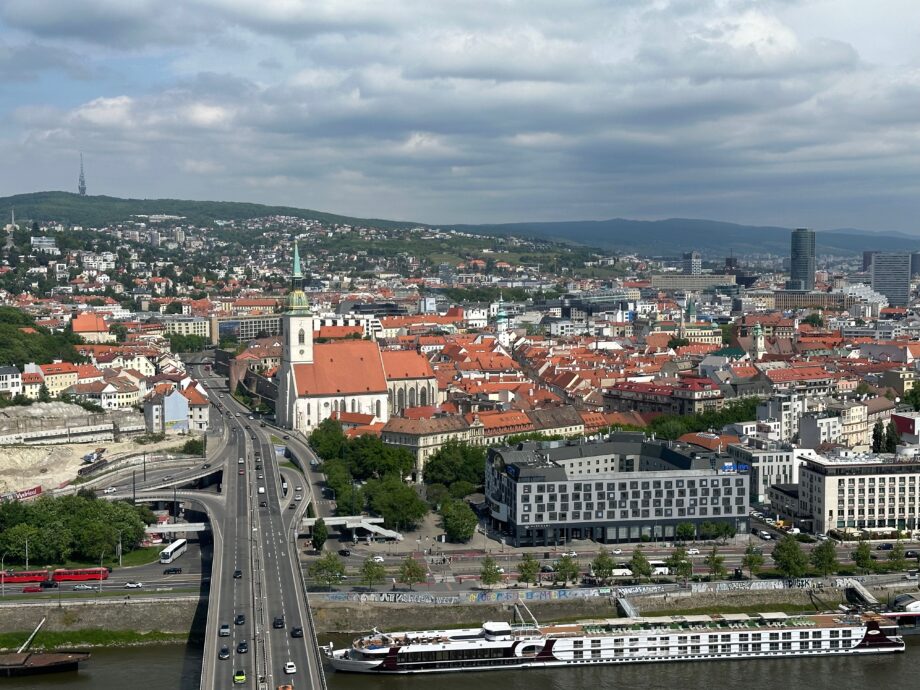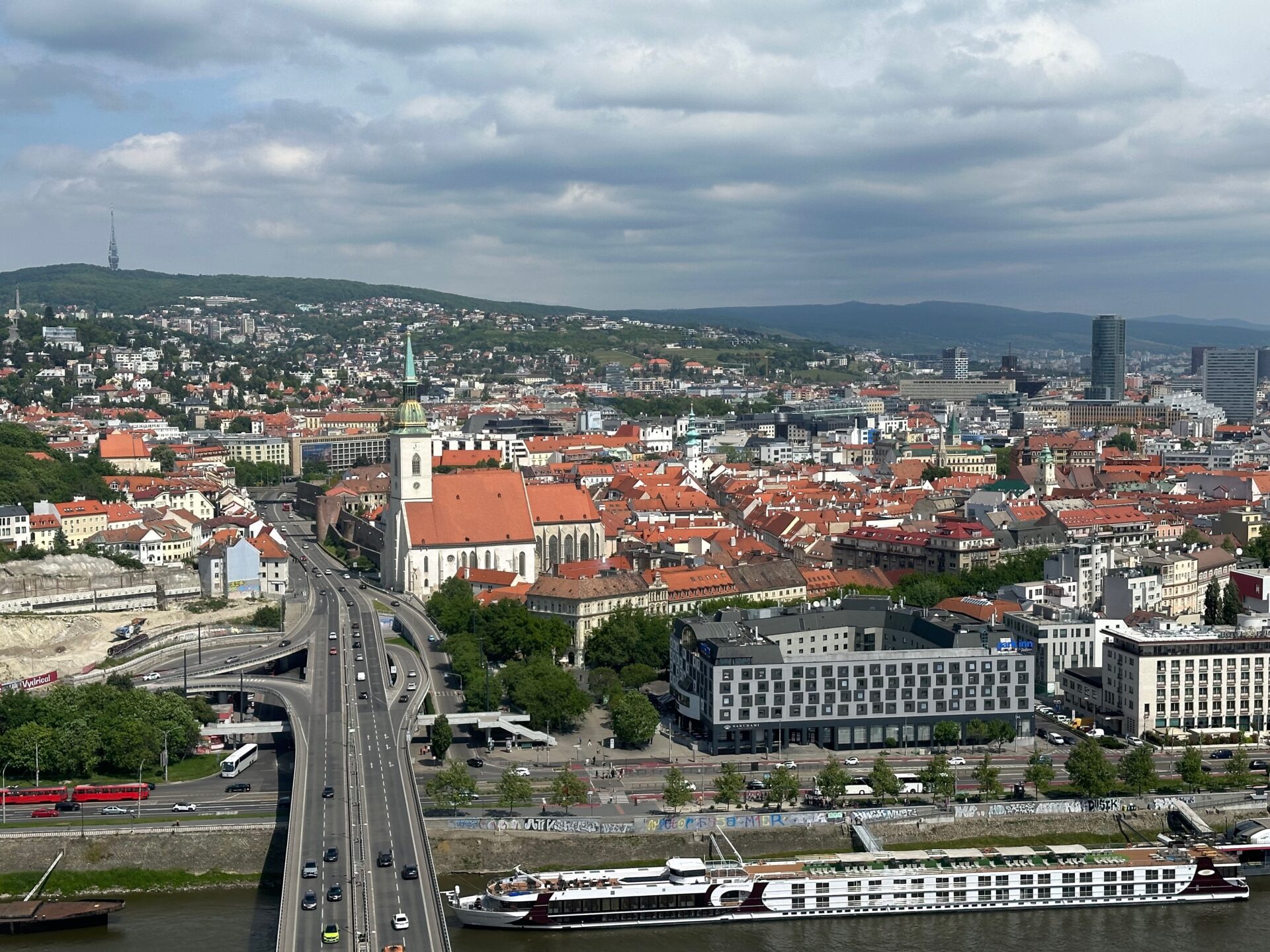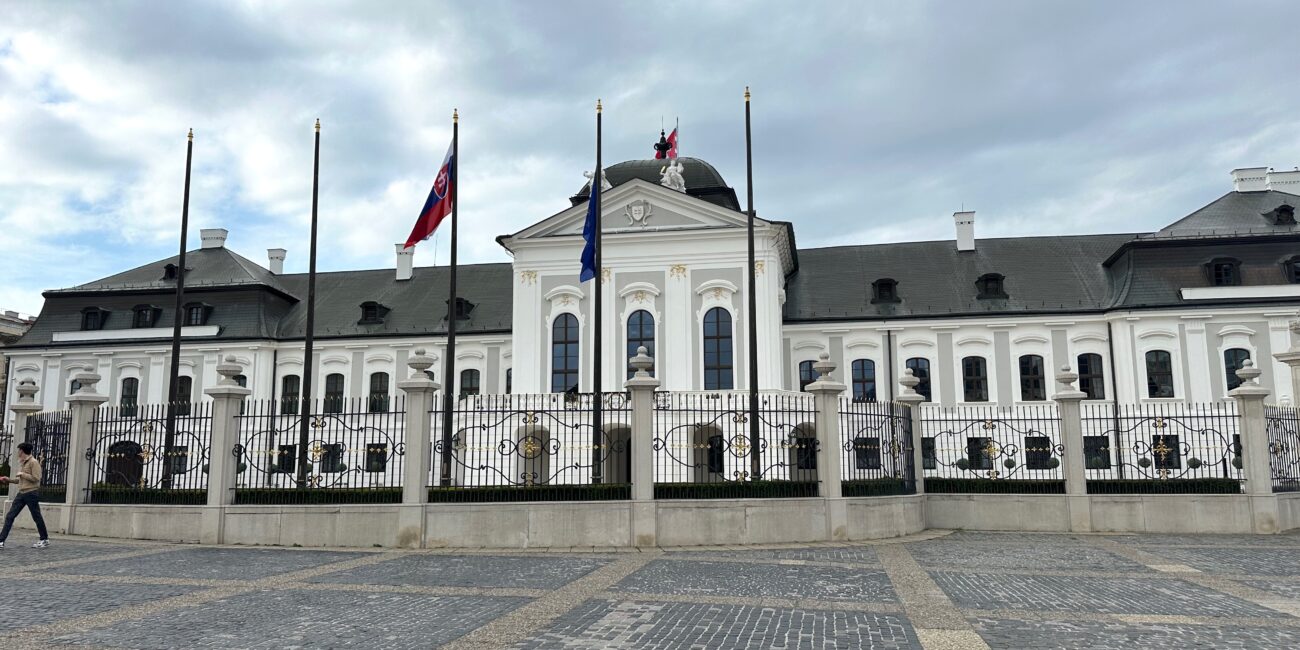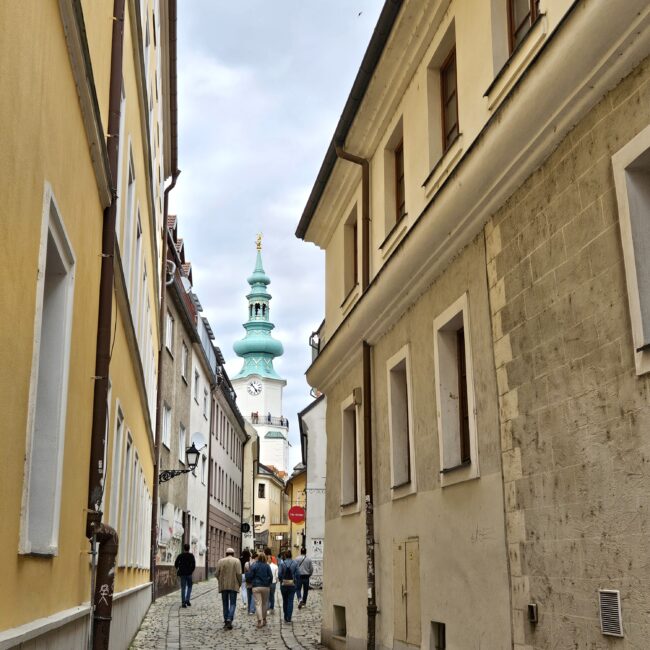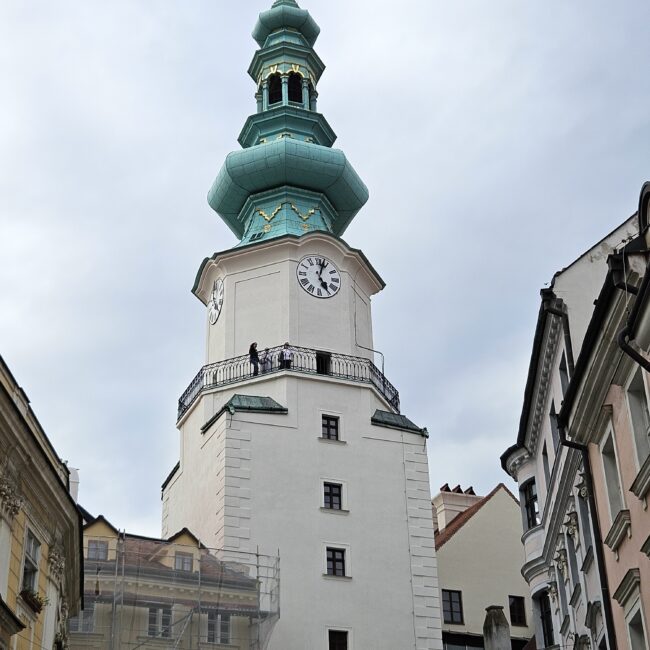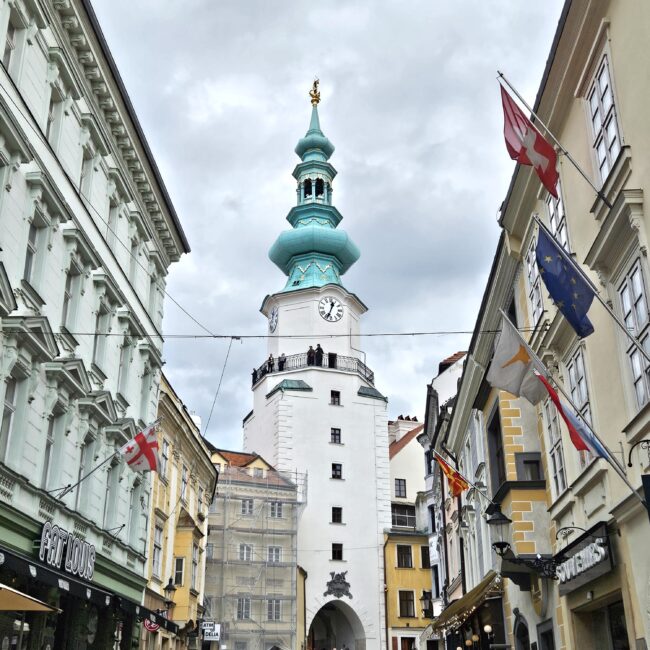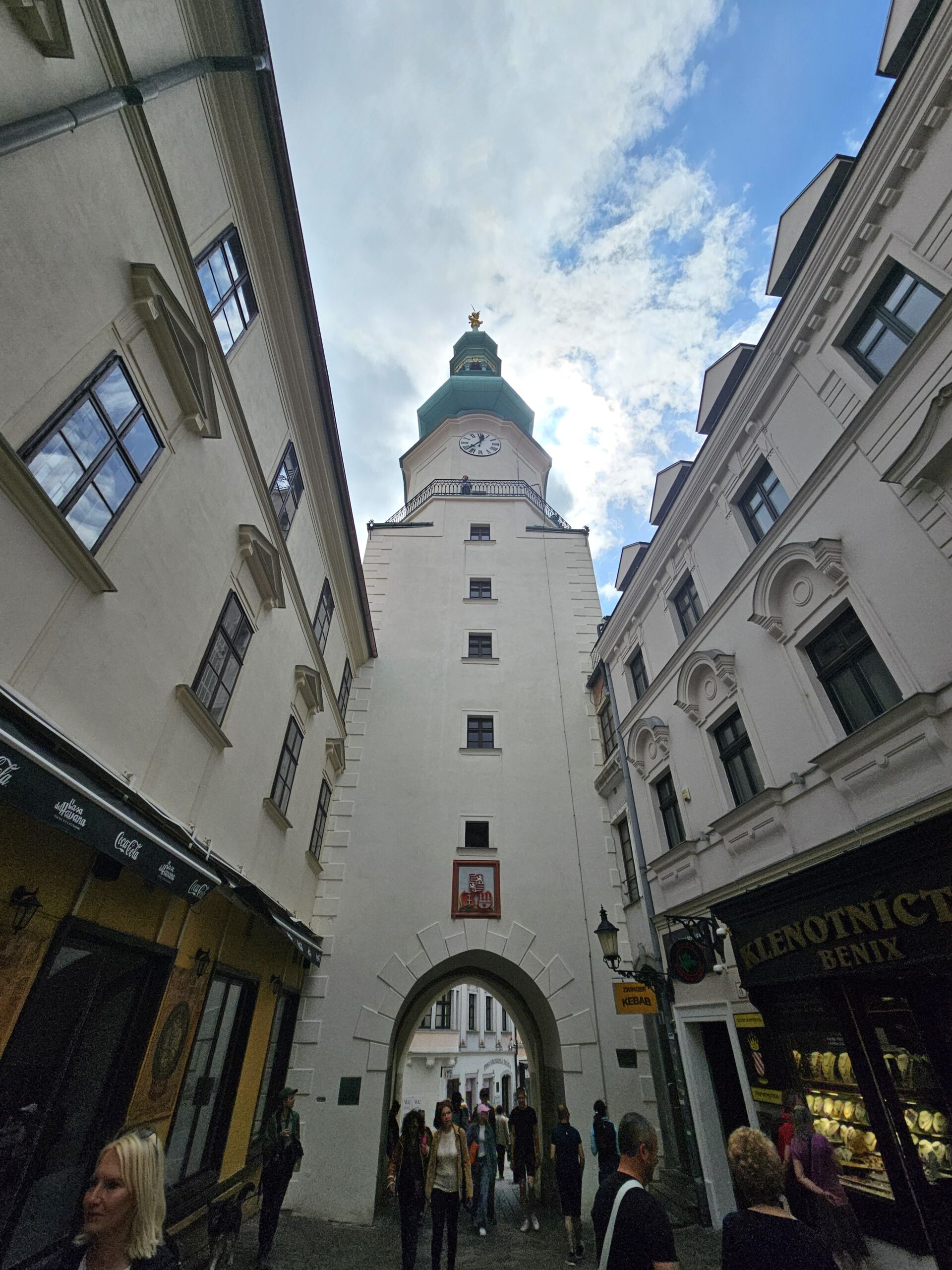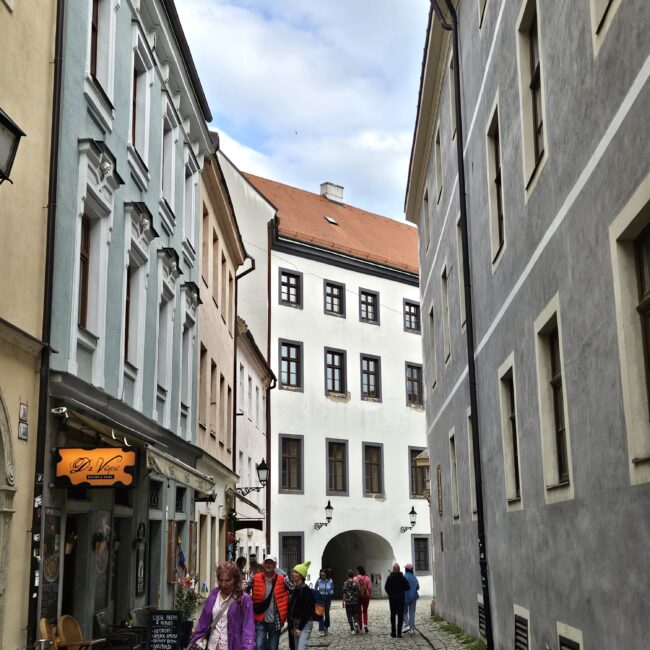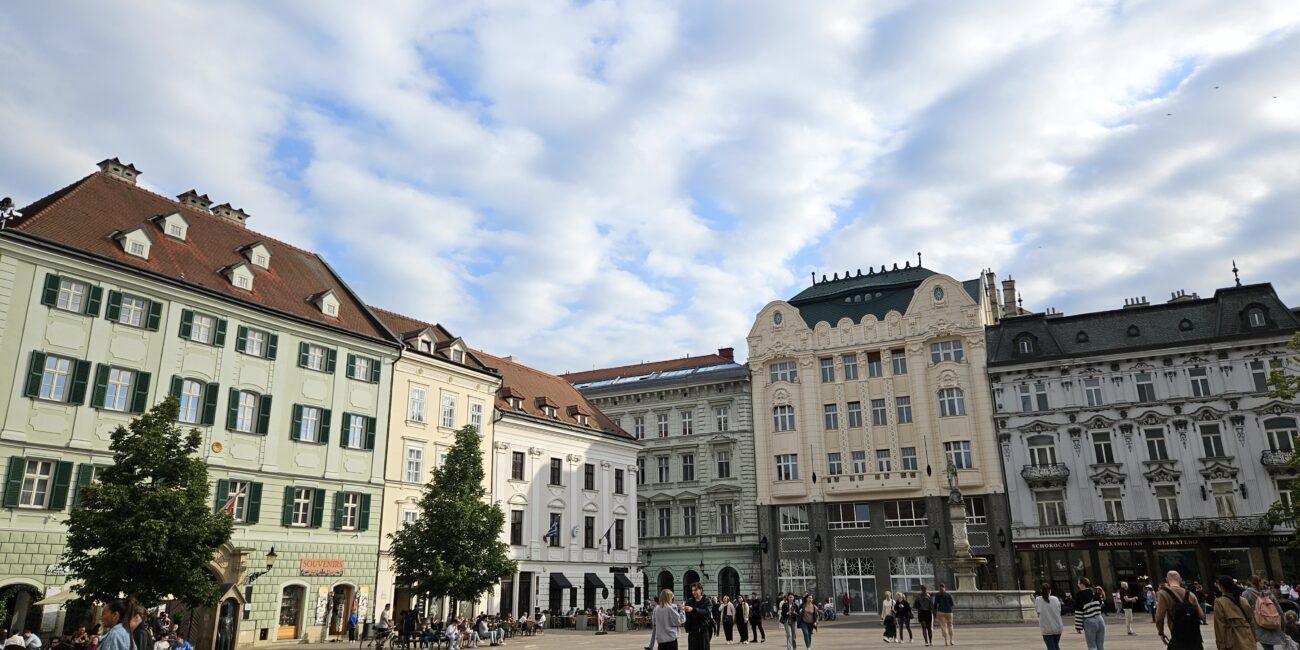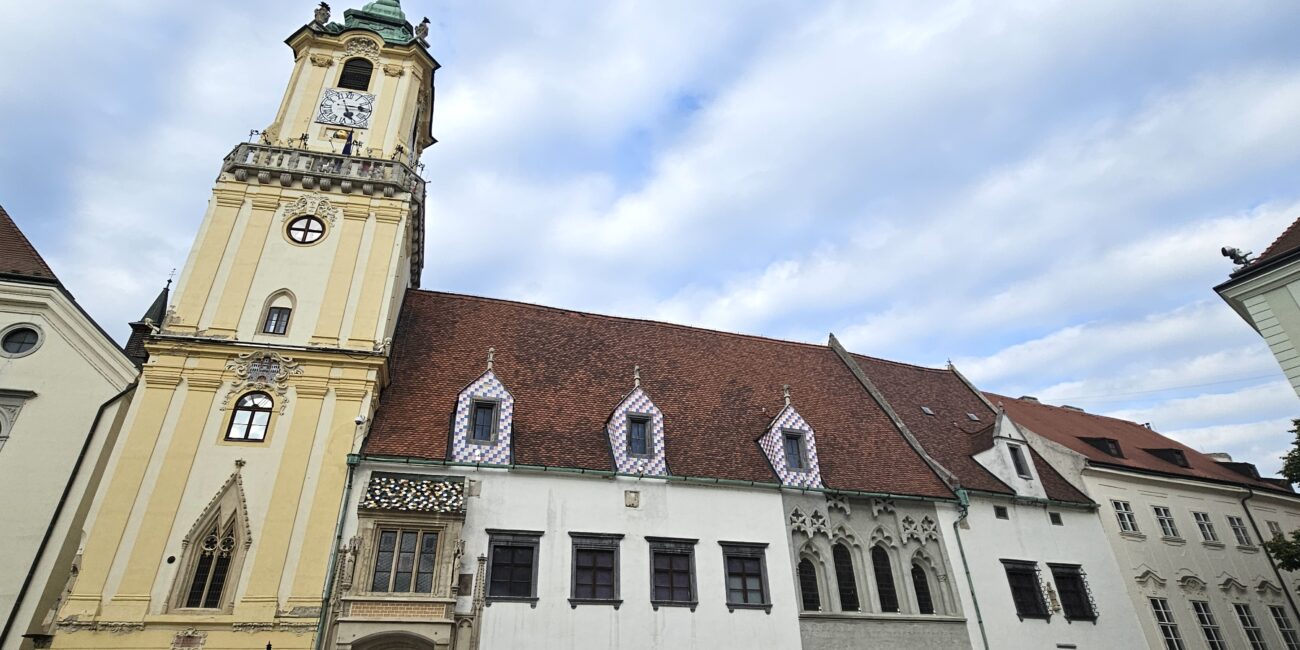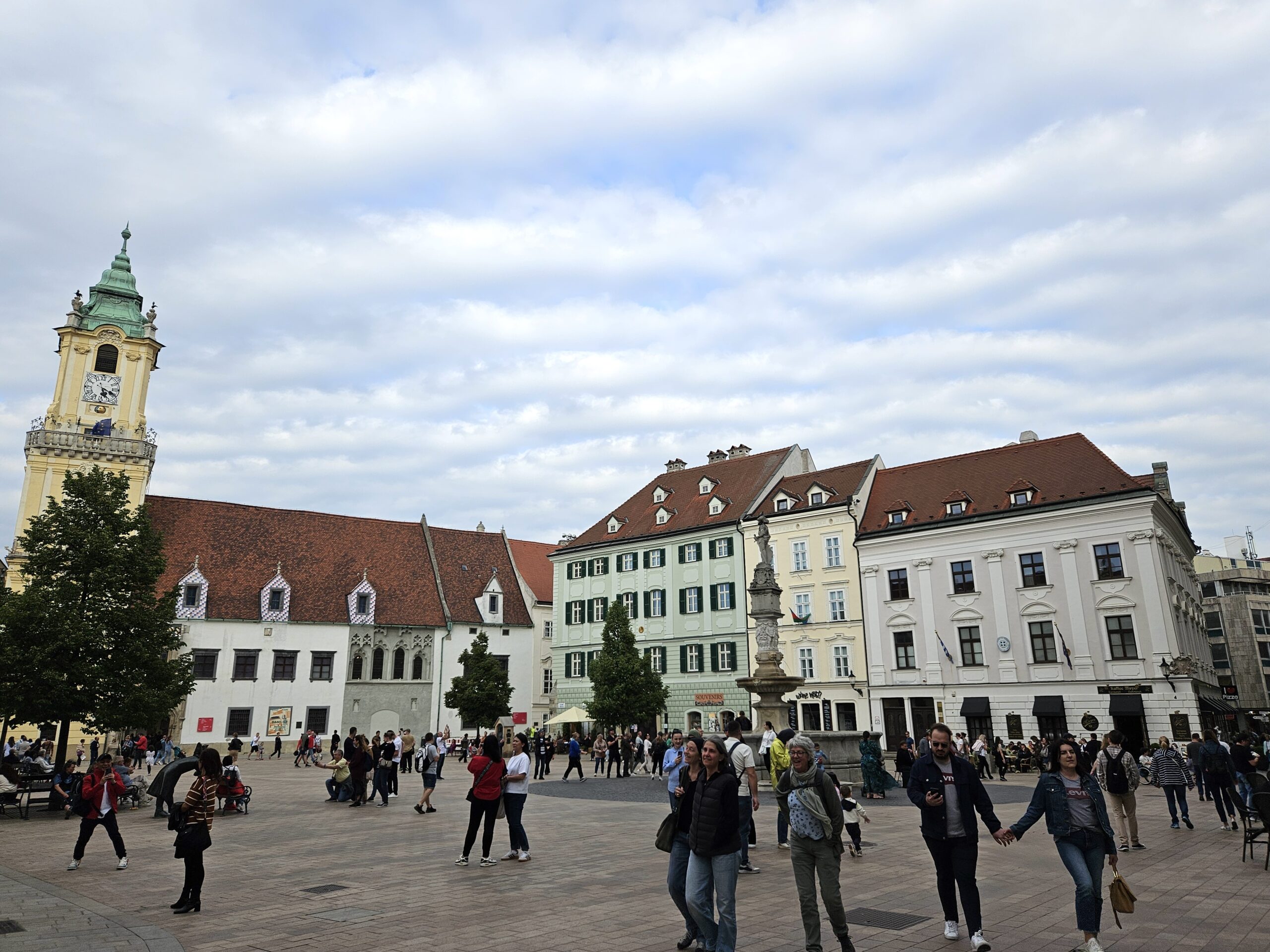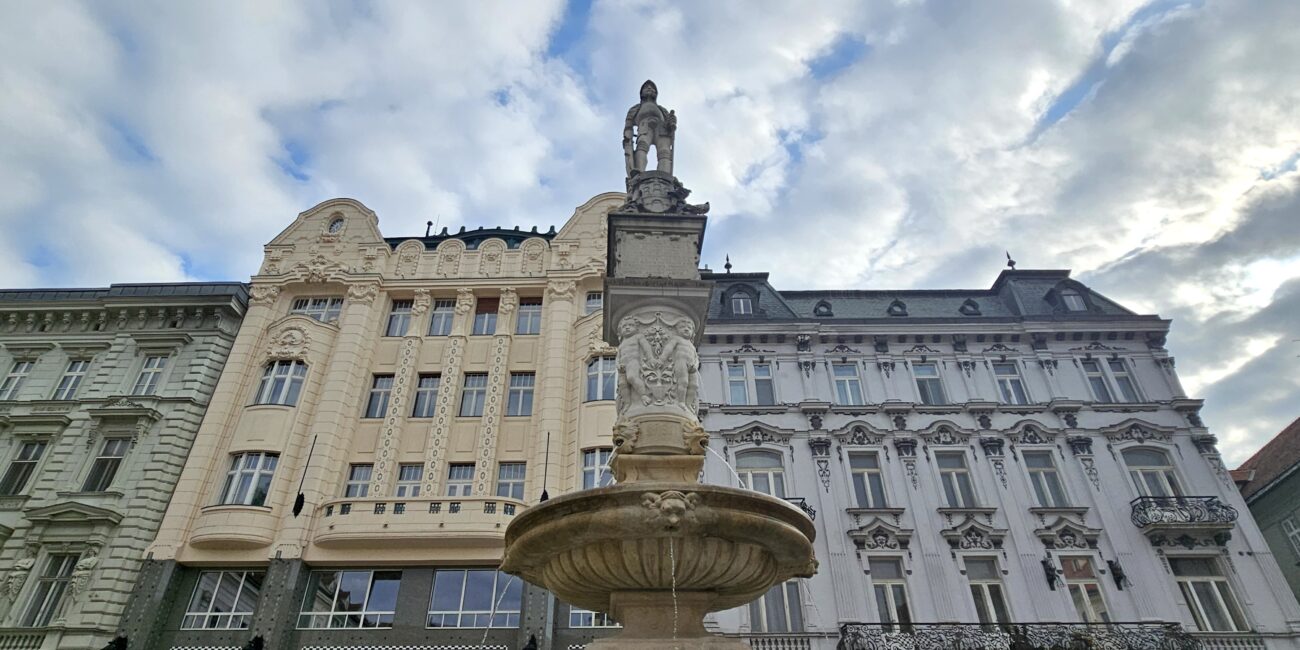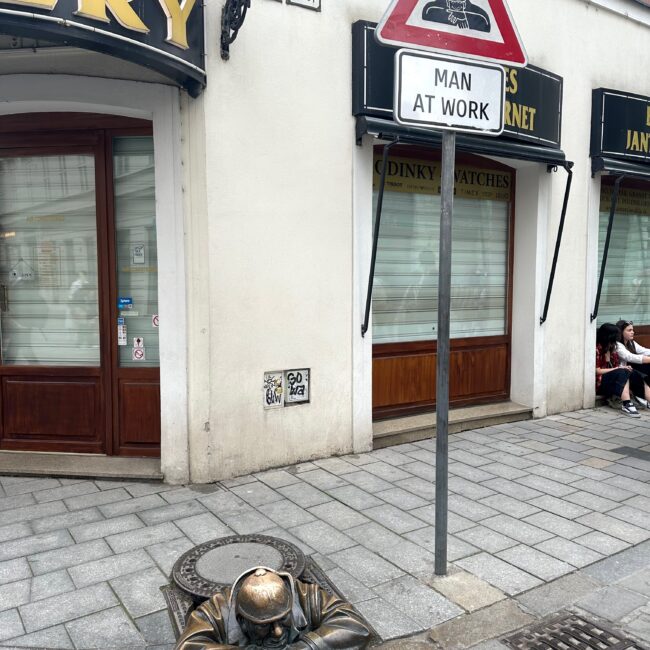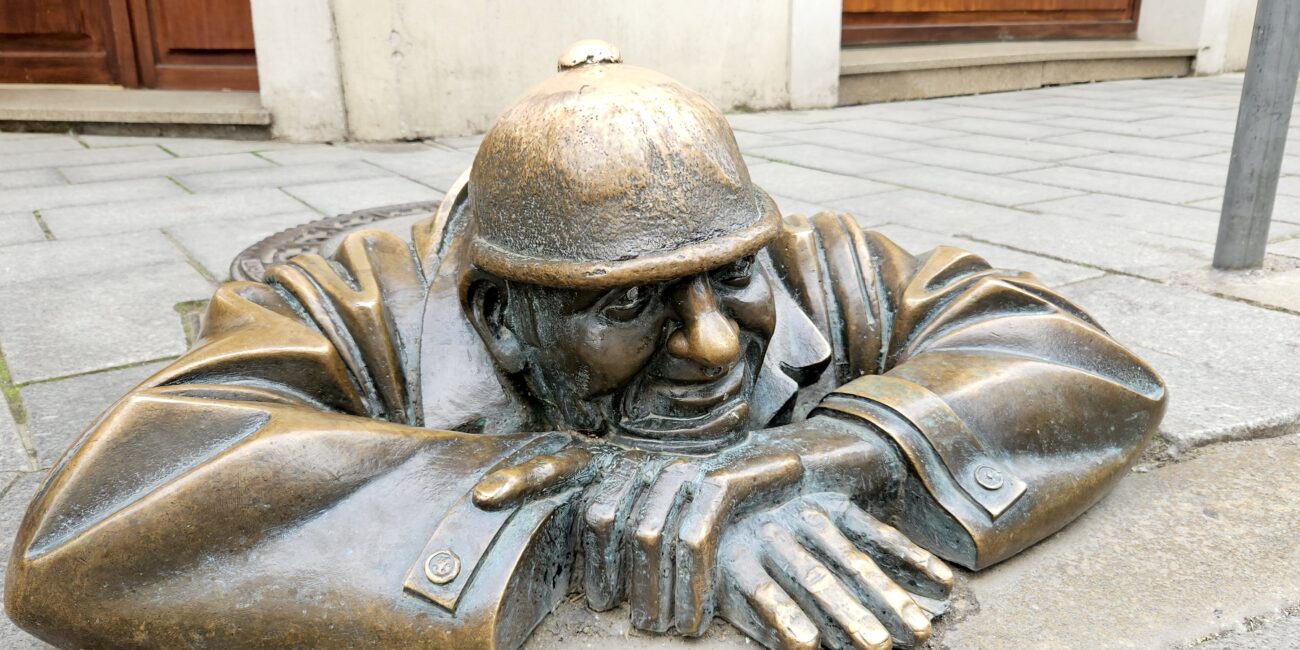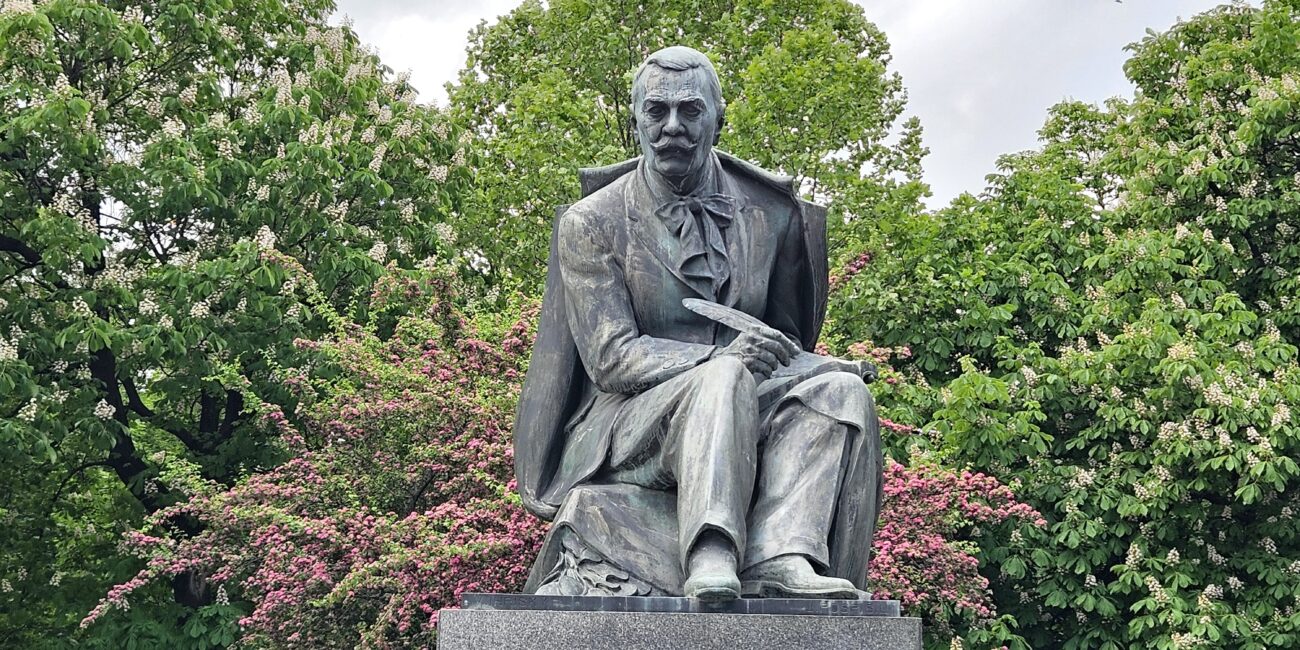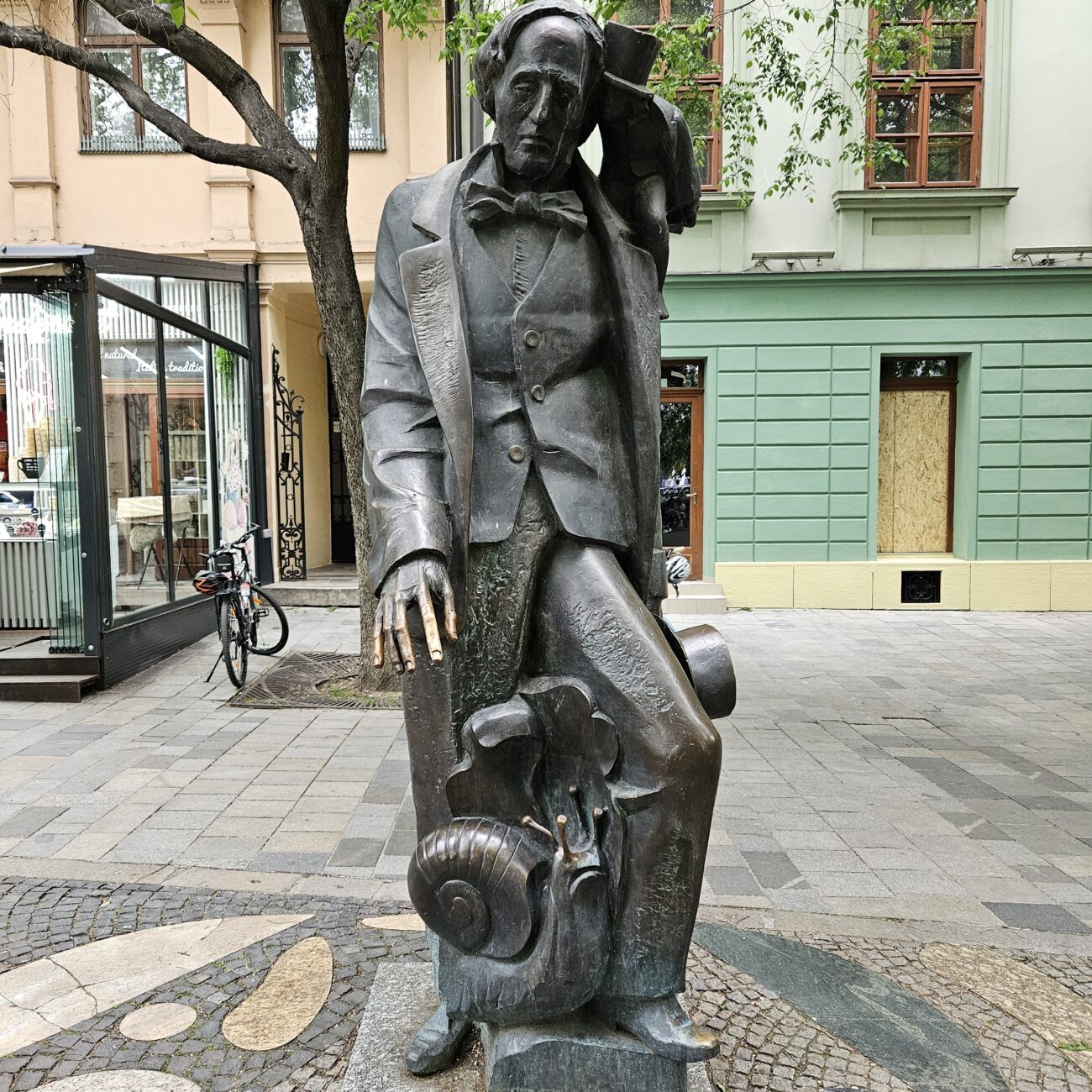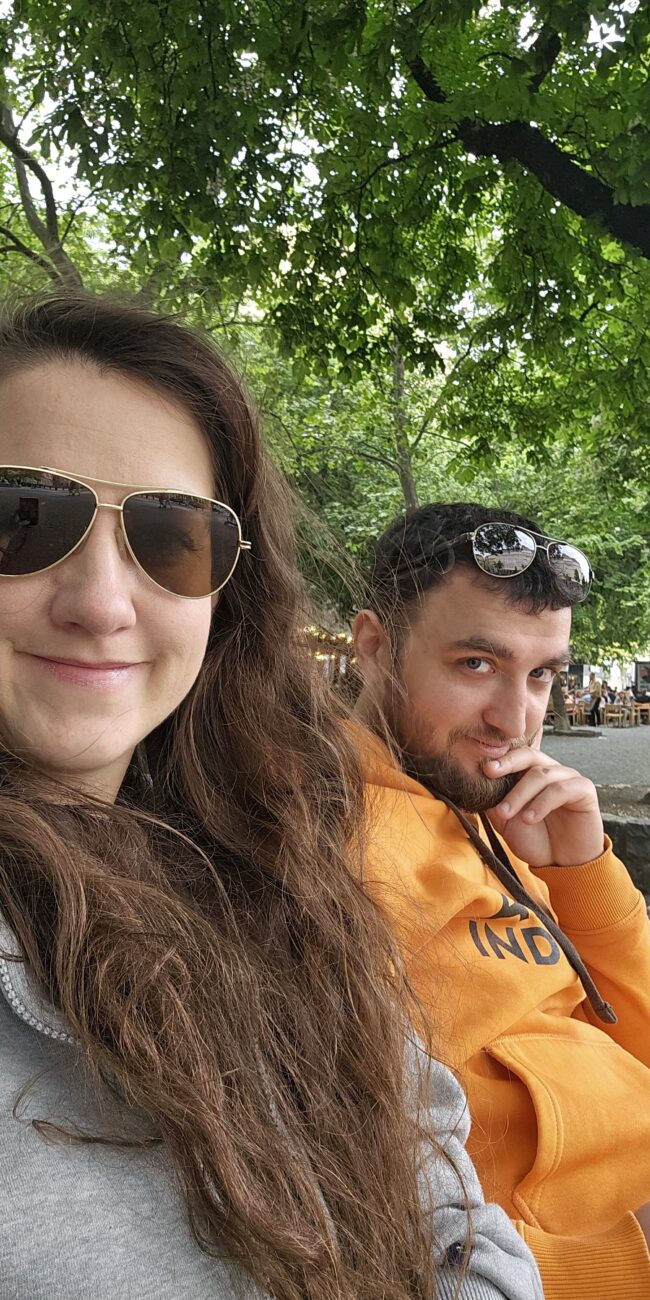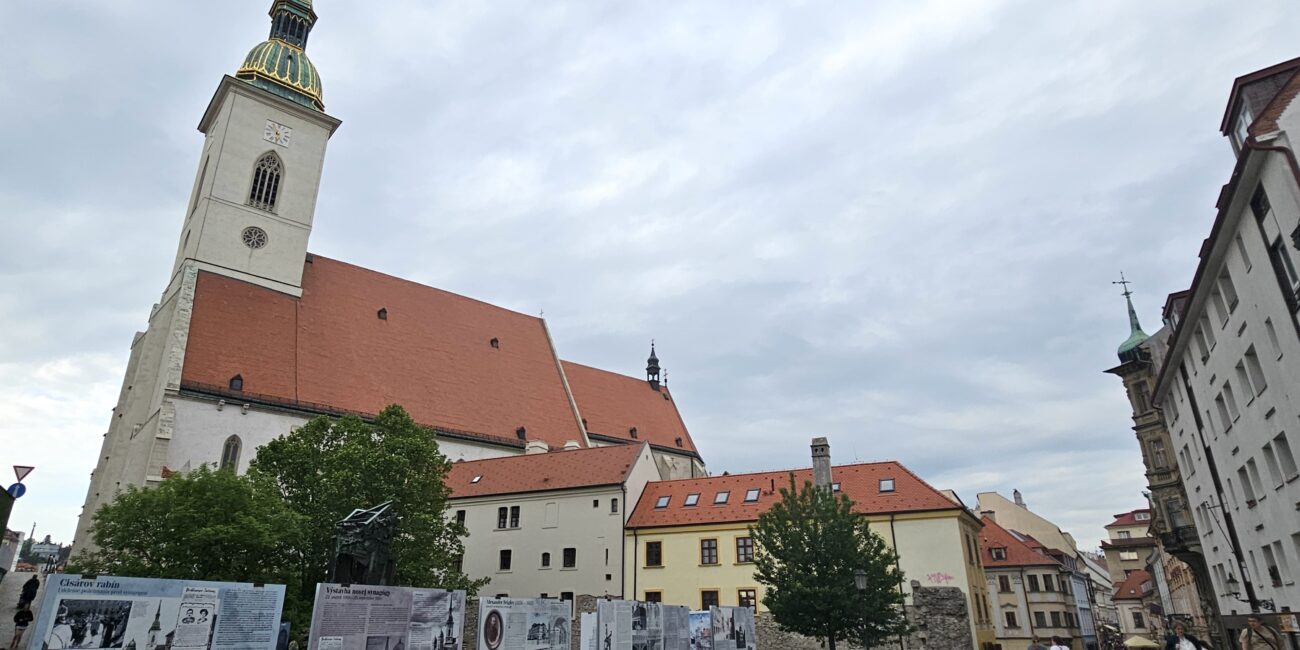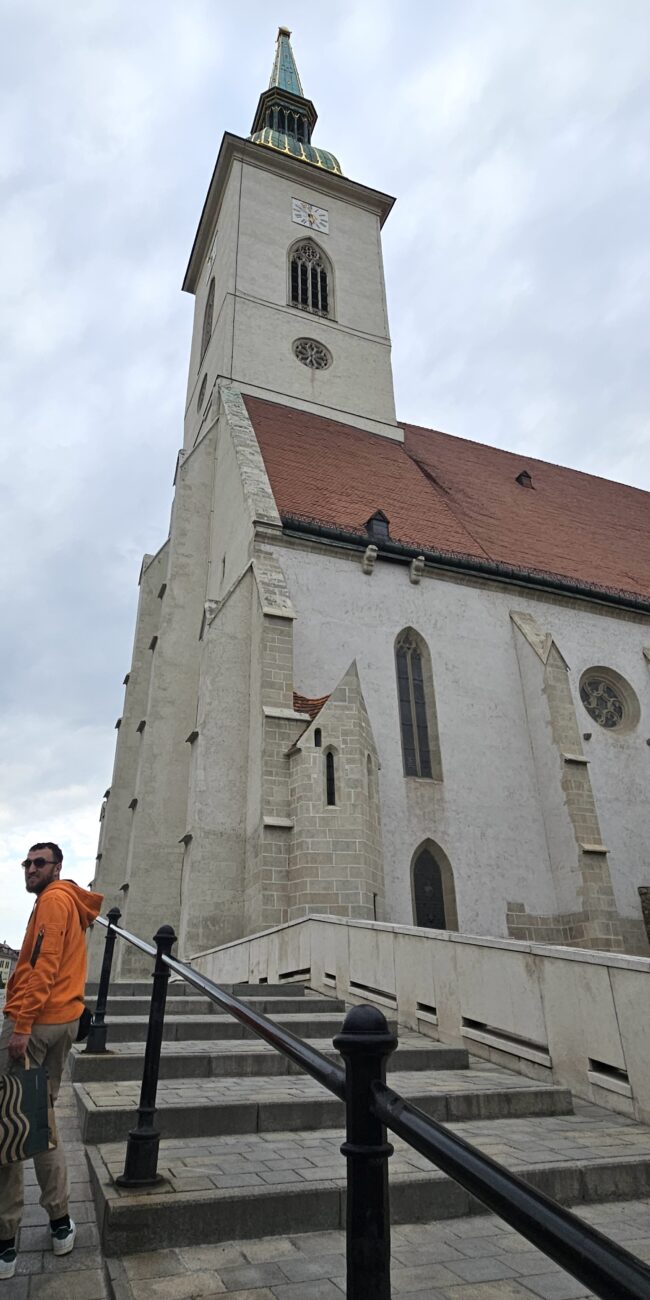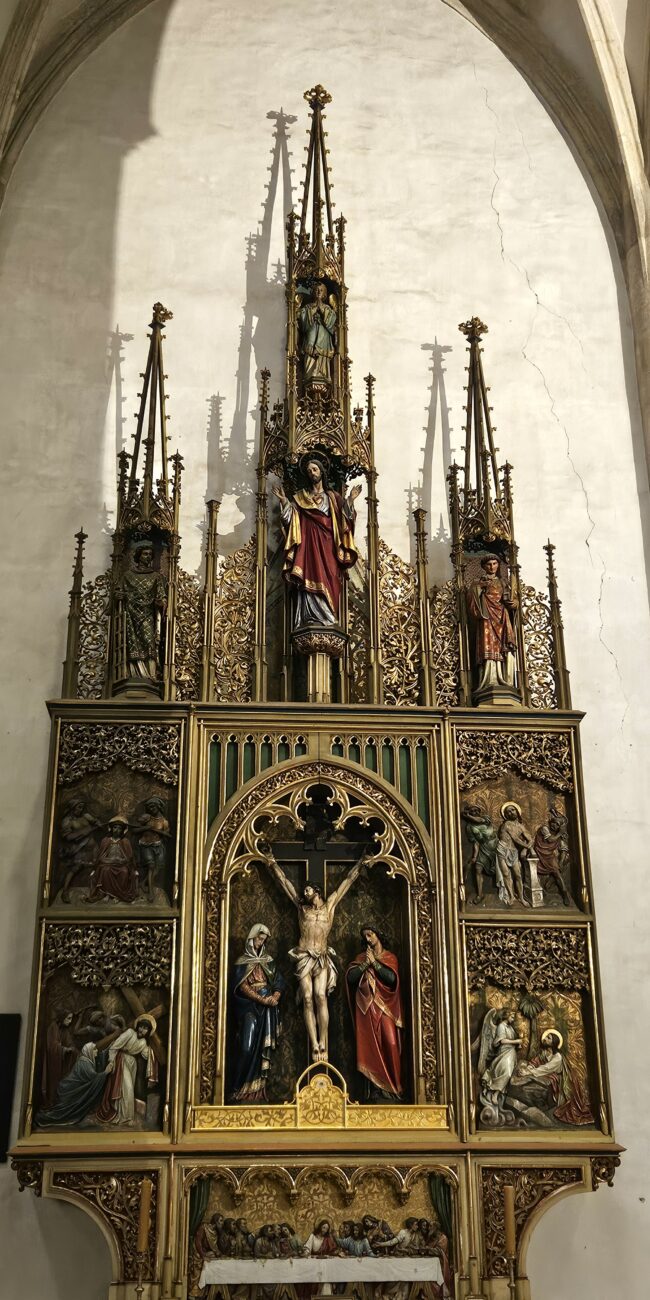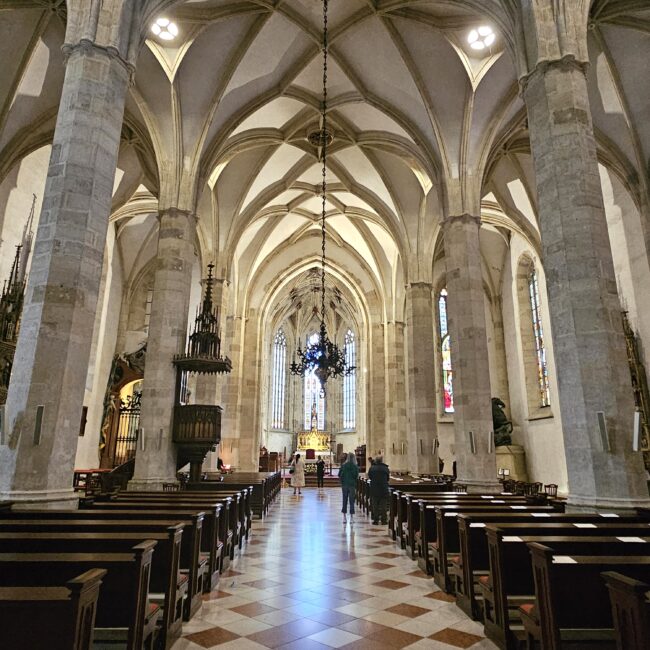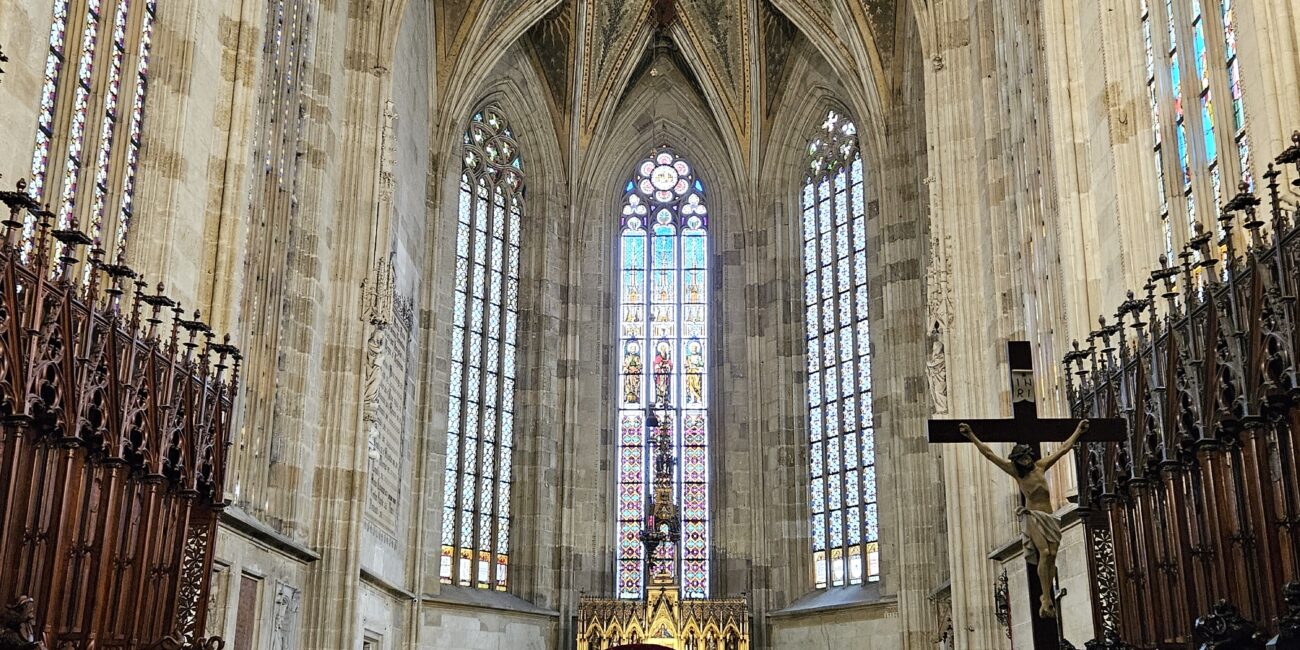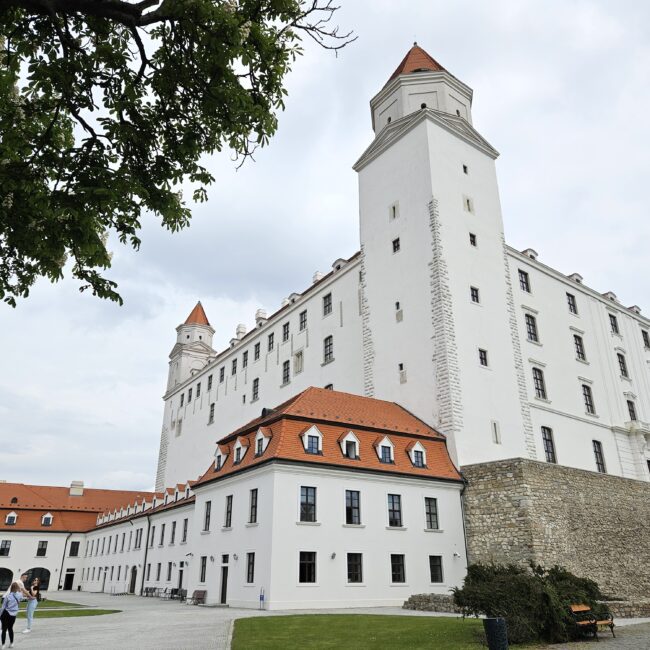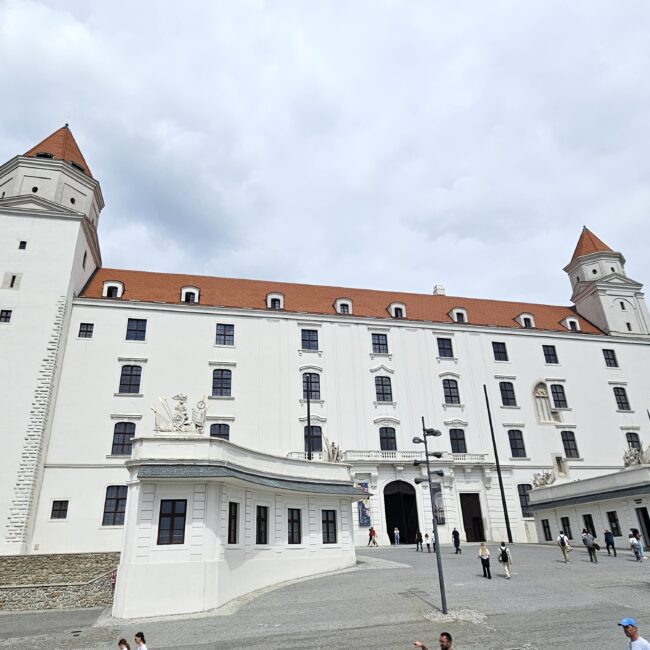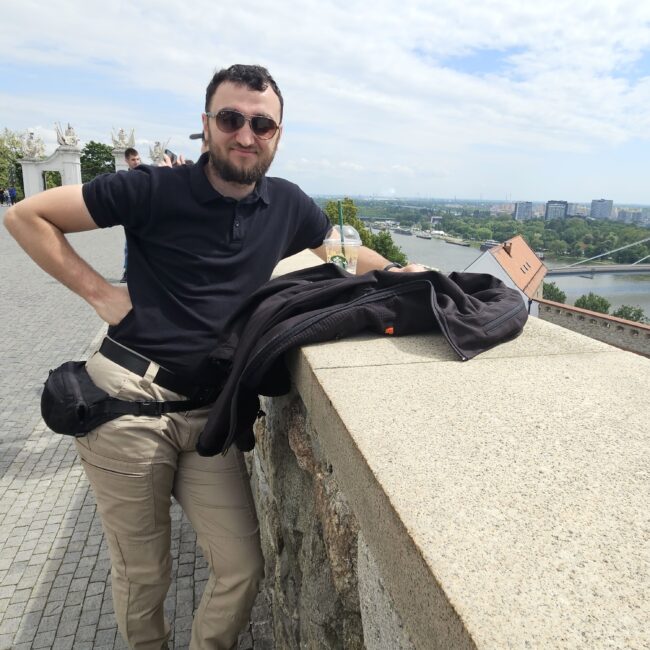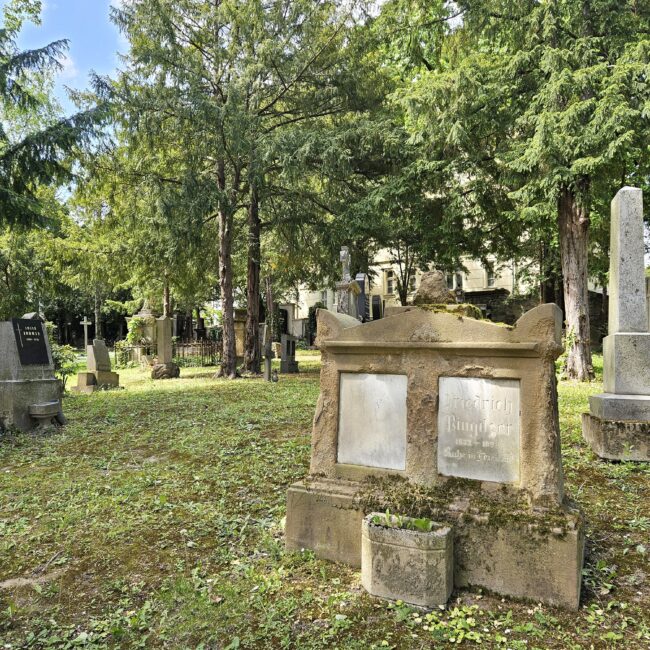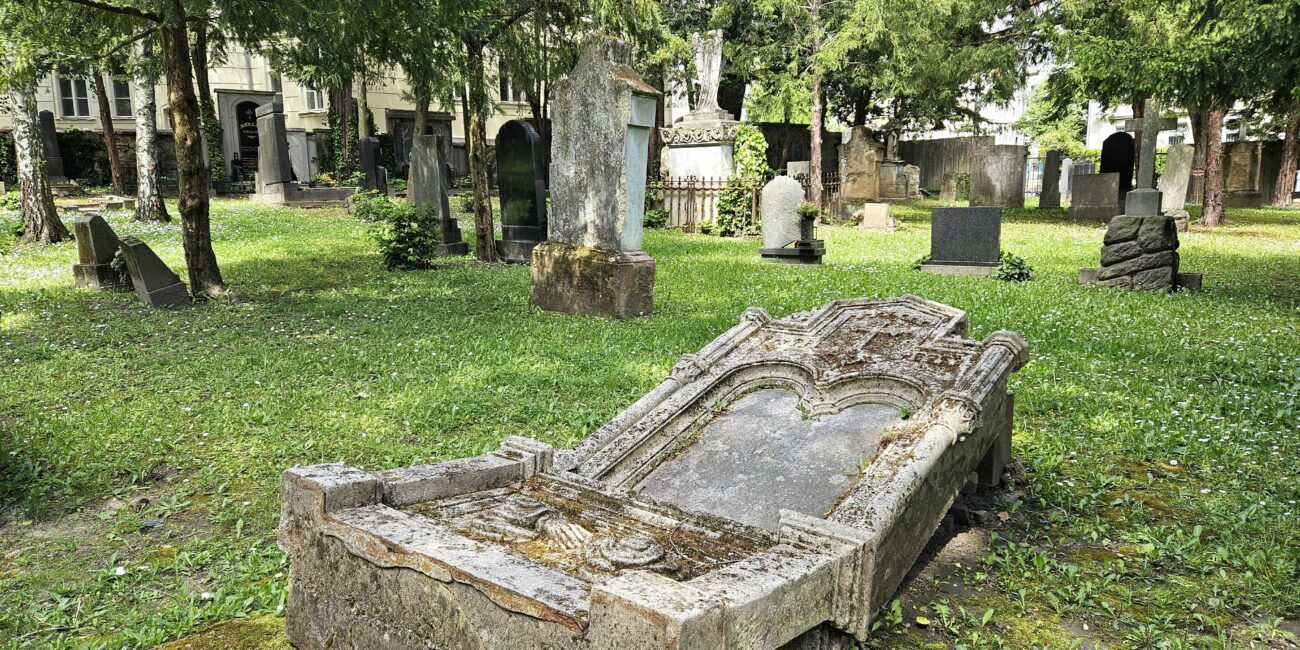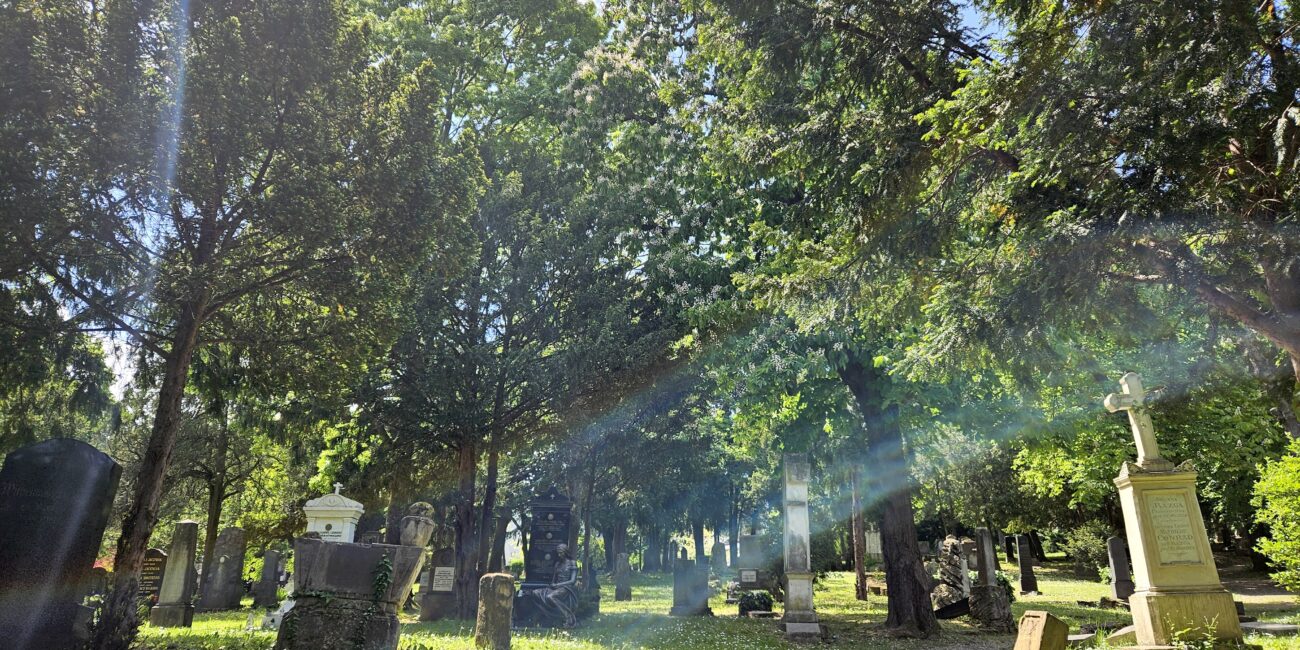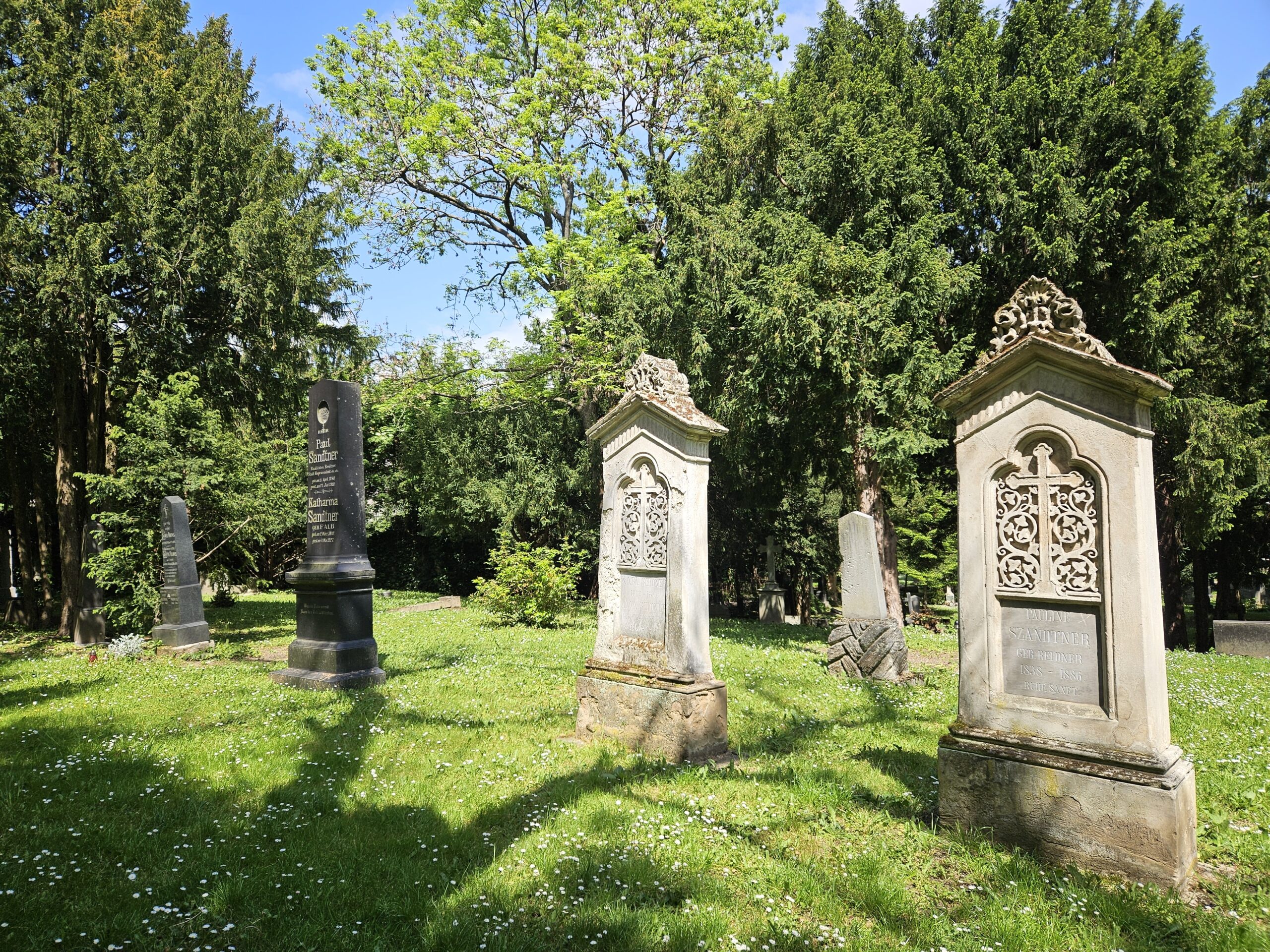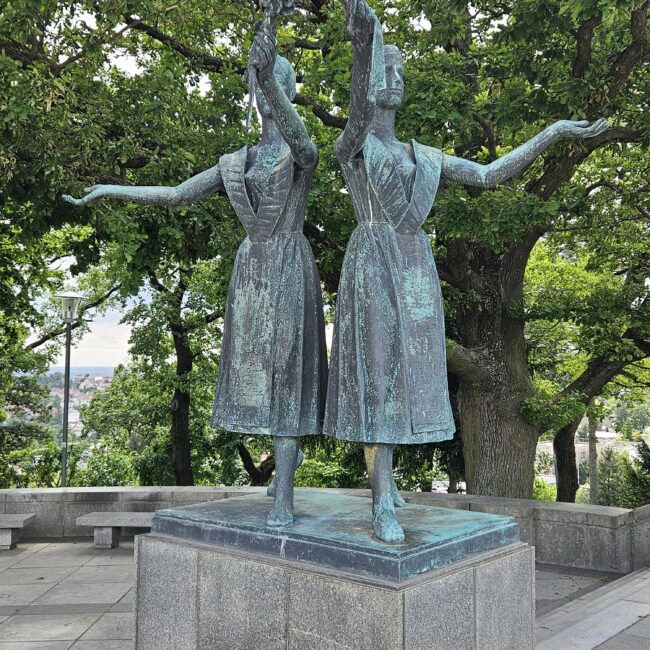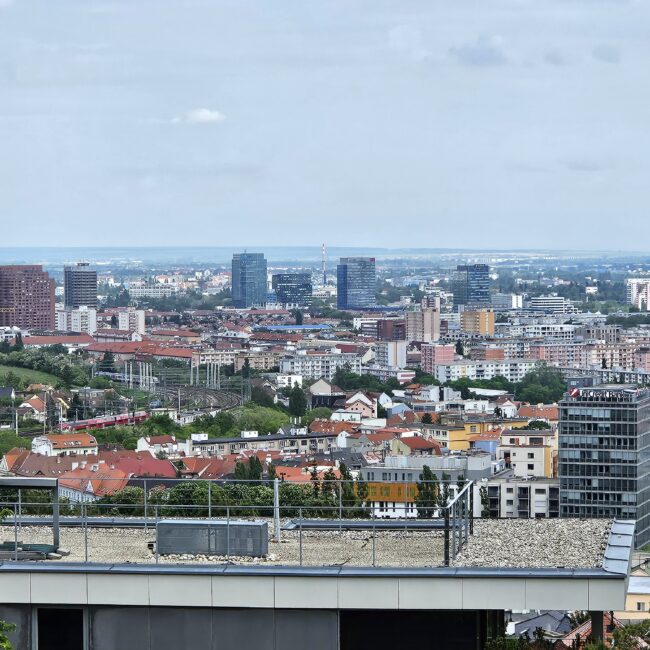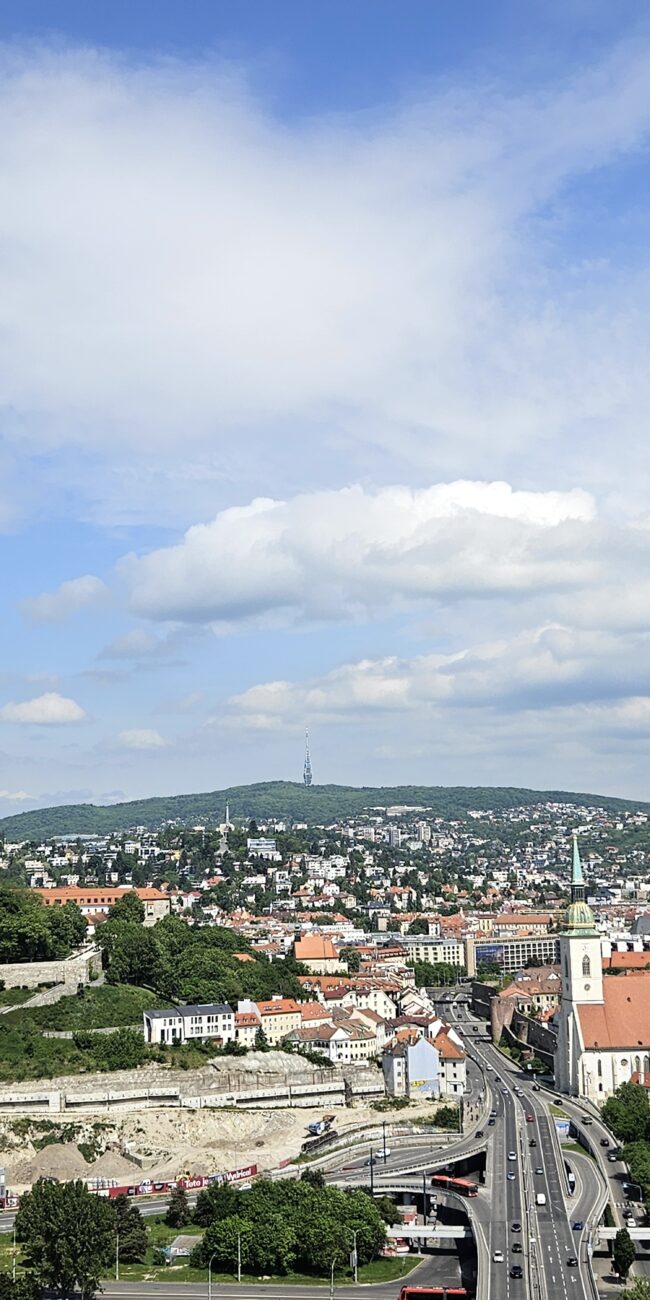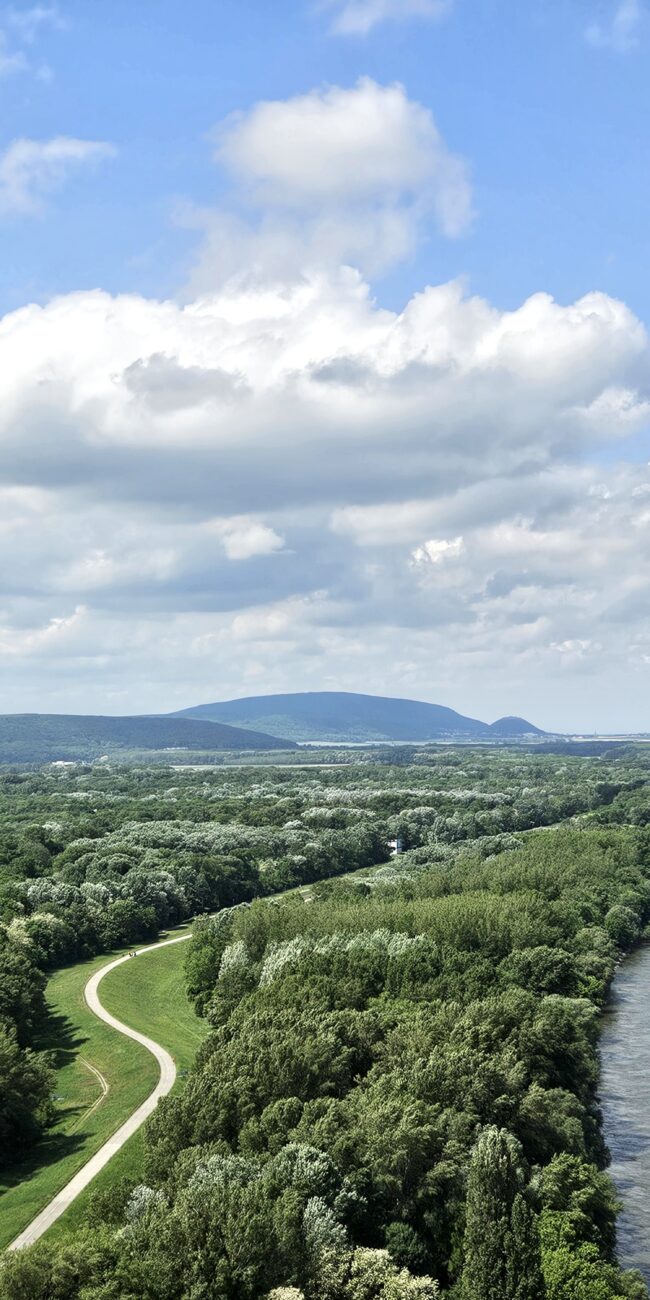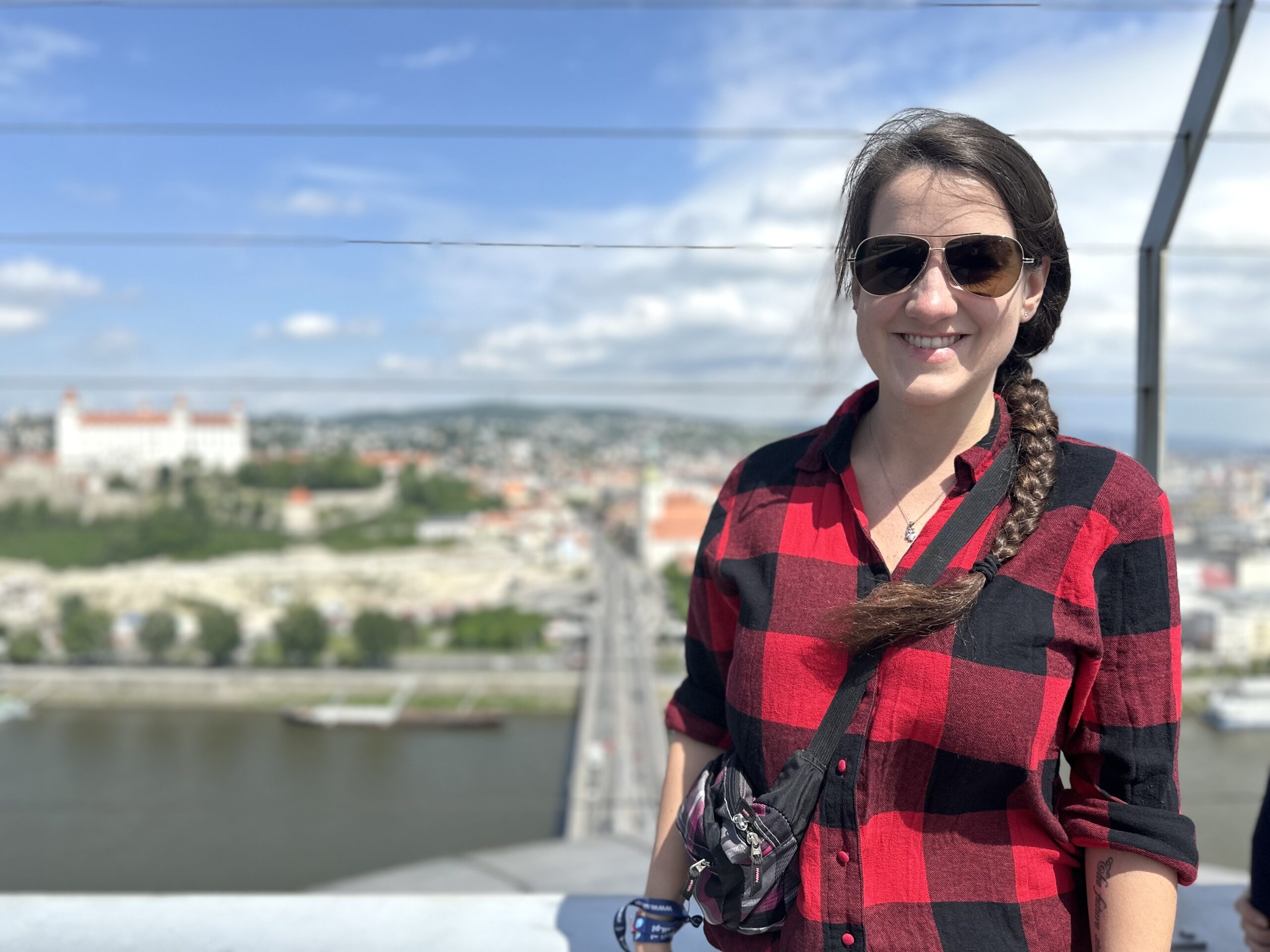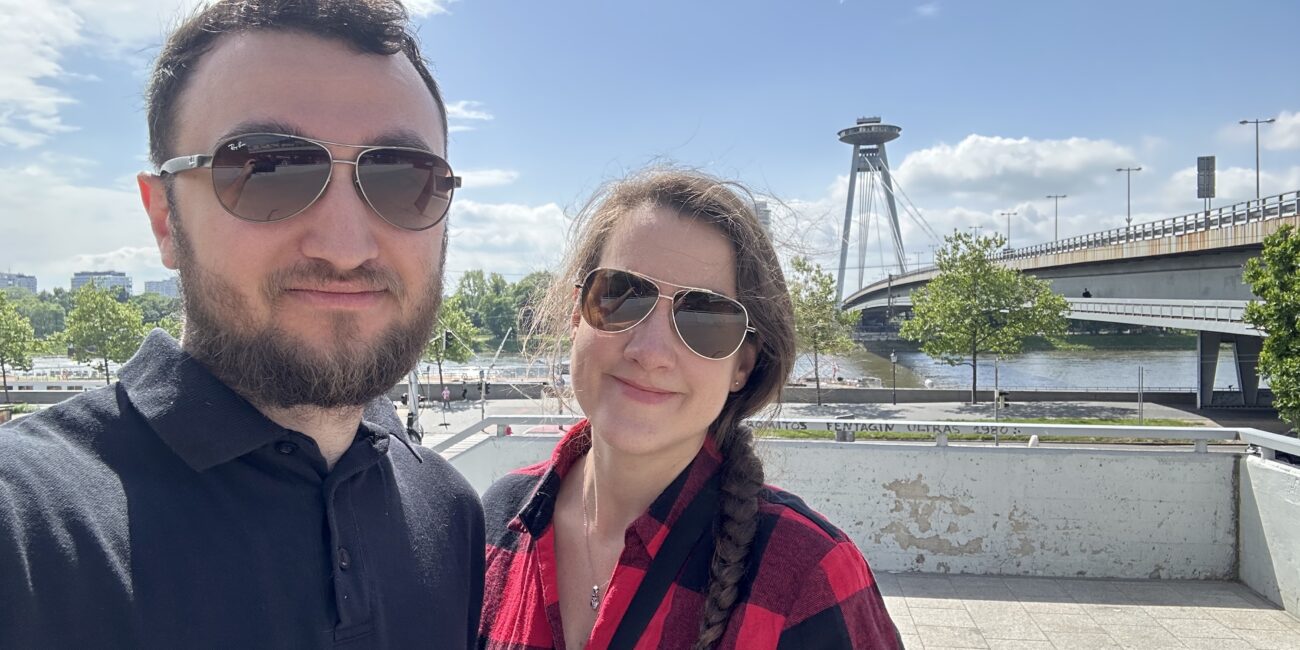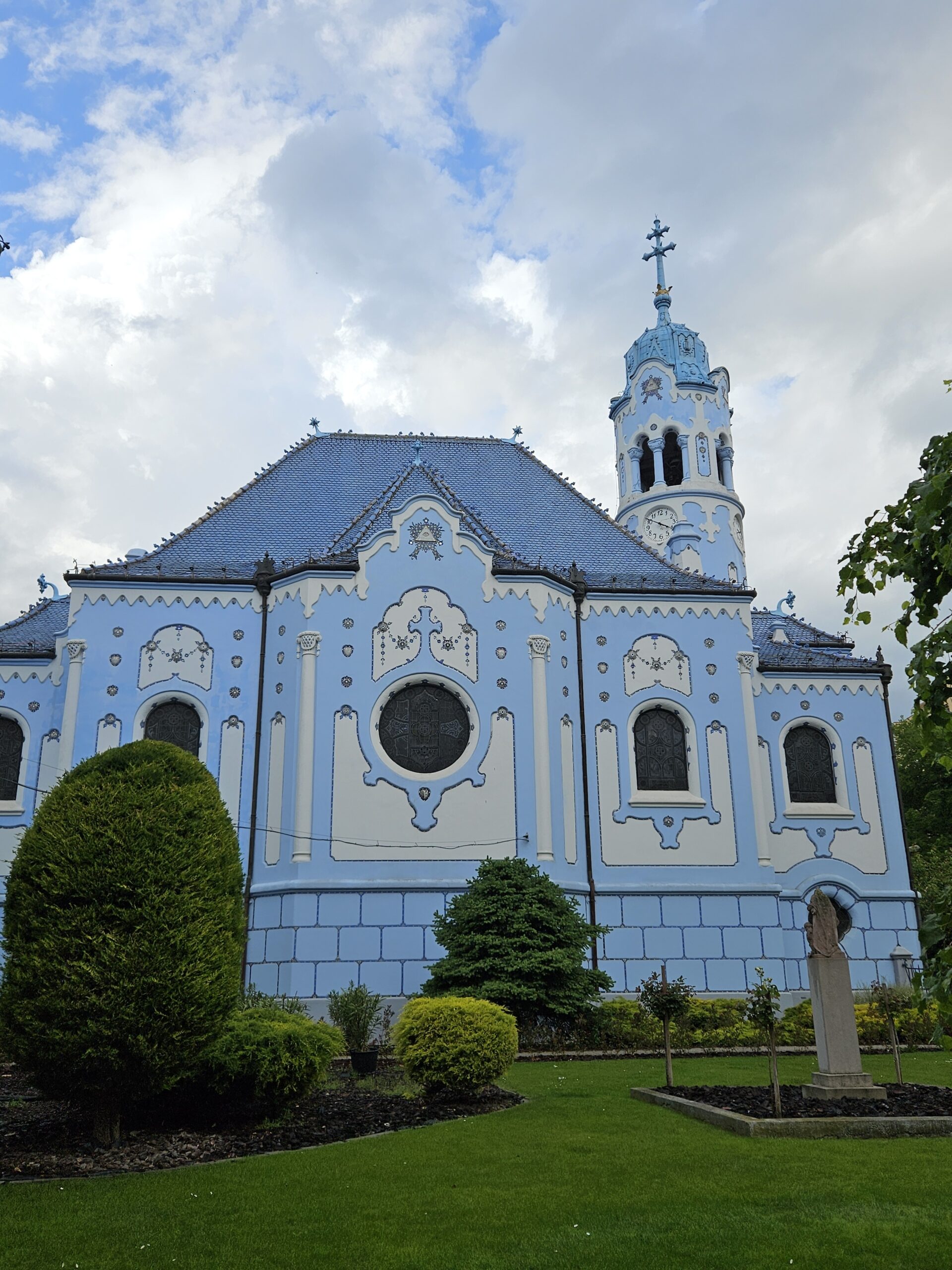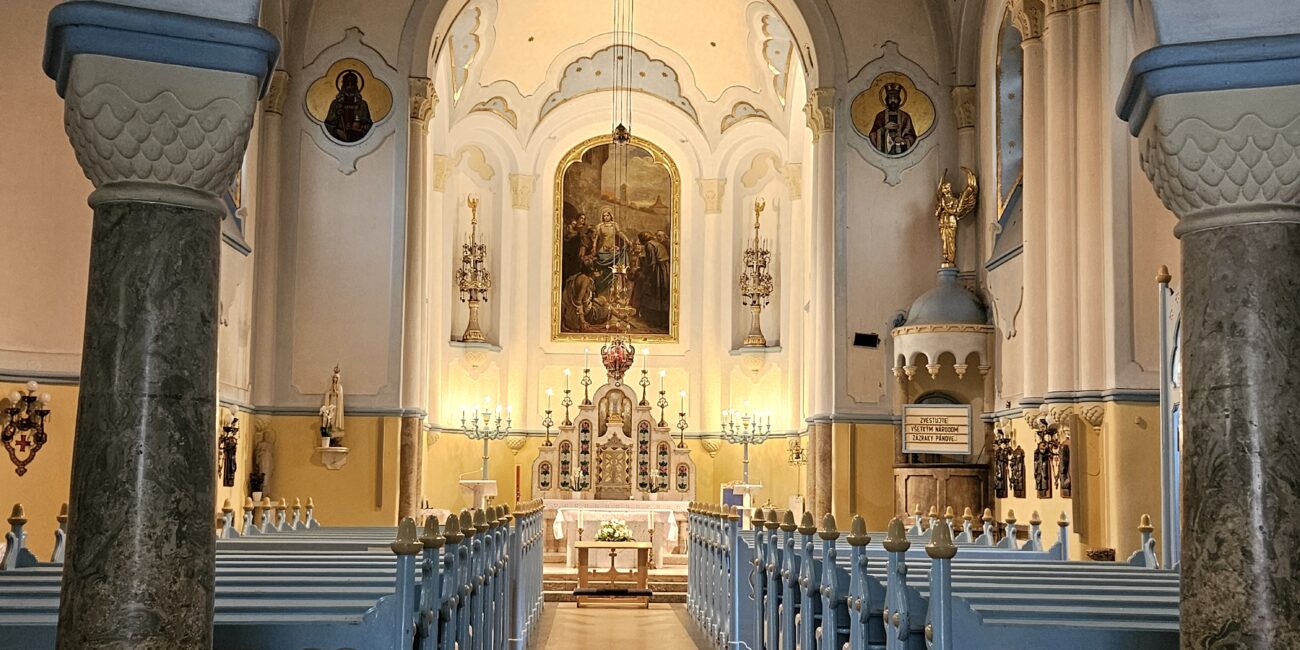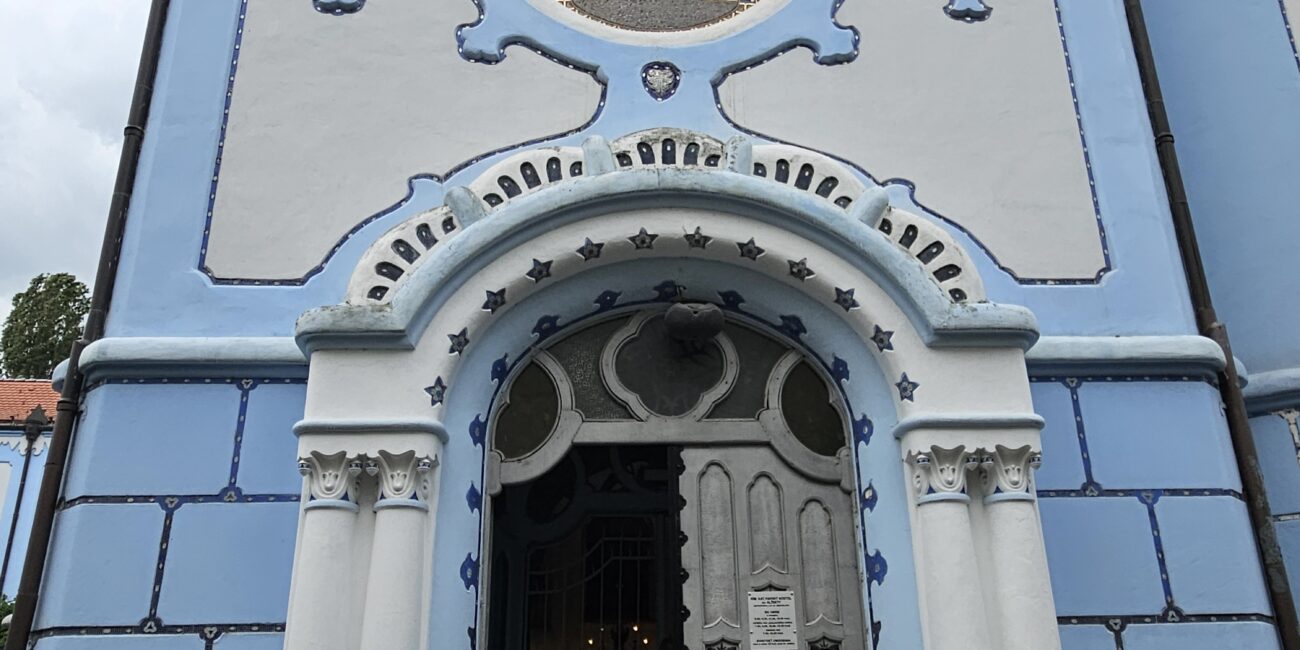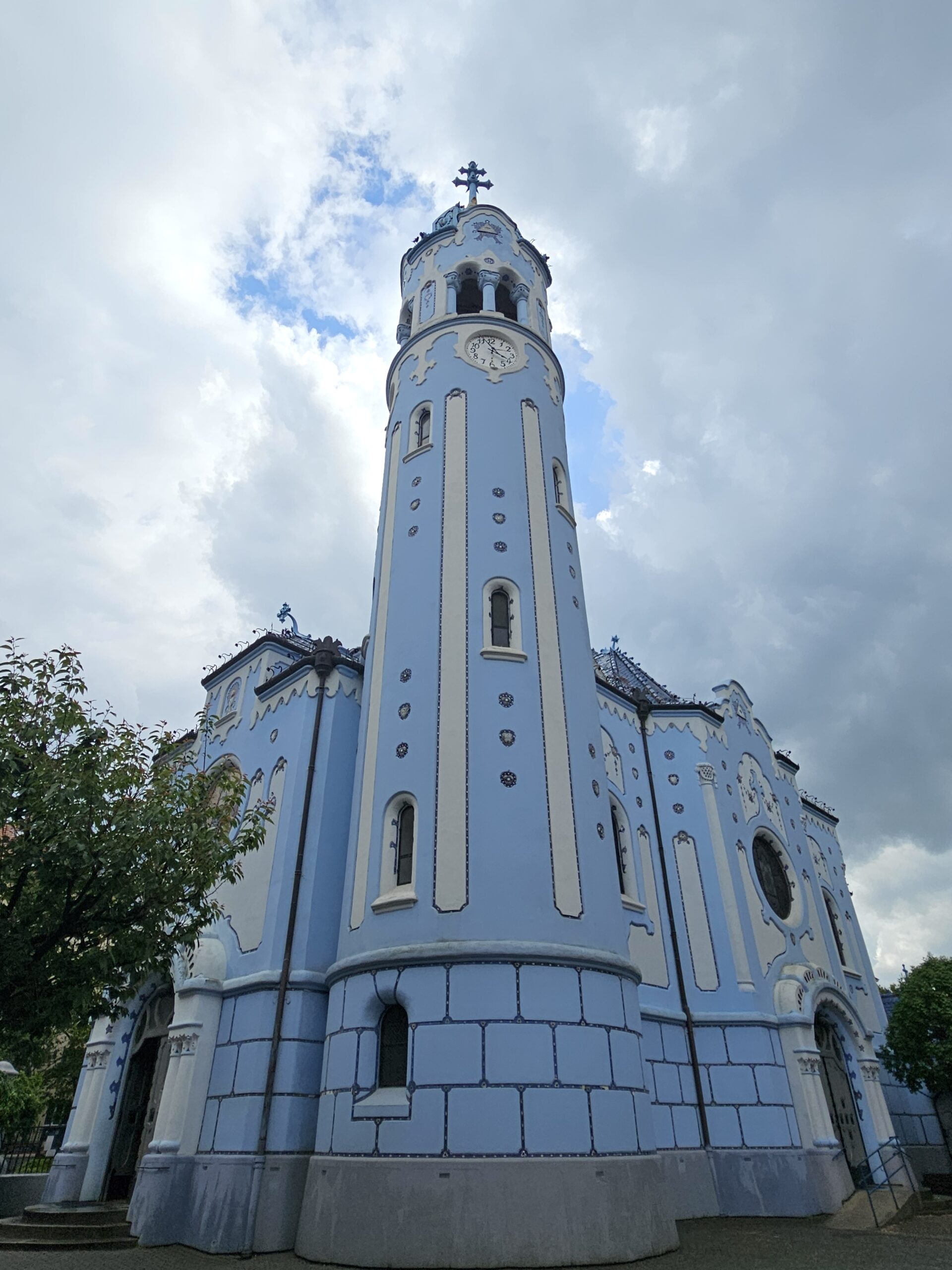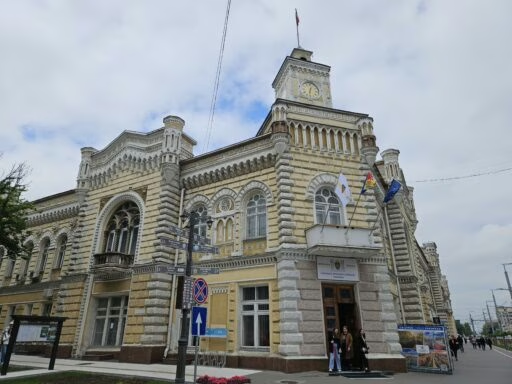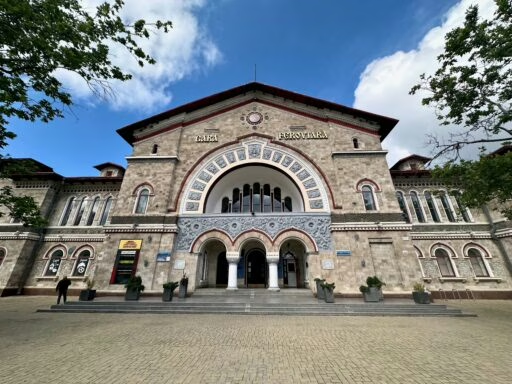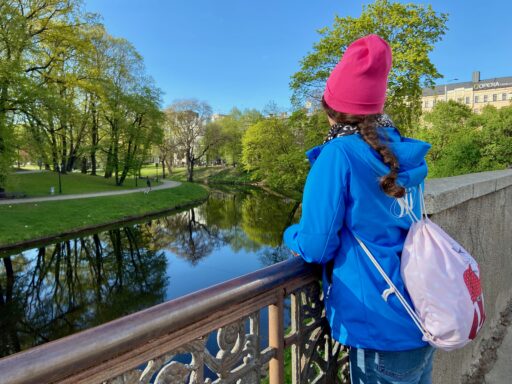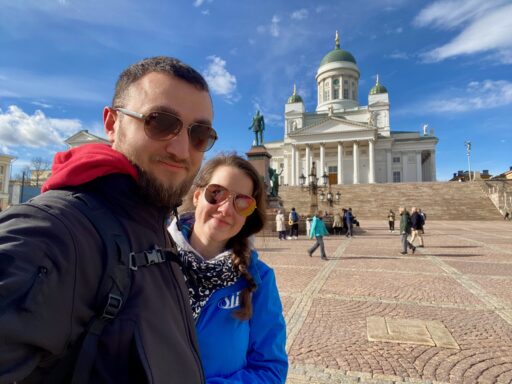This post is also available in:
Polski
Hello! 👋
Bratislava is a city that surprises with its calm, charming alleyways, and unique atmosphere. This half-million city, situated along the Danube, attracts visitors not only with its landmarks and history but also with its intimate vibe, offering a break from the rush of large metropolises. Although it’s a capital, there’s a sense of freedom and a slow pace here that encourages leisurely exploration.
📖 Want to experience Bratislava from our perspective? Read the full story and check out our trip summary!
️🗺️ We began our May holiday journey in Vienna, a city rich in history and culture. Be sure to see what we explored and which places left the biggest impression on us in the first part of this adventure!
The Presidential Palace in Bratislava
The Presidential Palace, also known as the Grassalkovich Palace, is an 18th-century baroque residence located in the center of Bratislava. Today, it serves as the residence of the Slovak President, although it once belonged to the aristocracy. The palace is surrounded by French-style gardens open to visitors – a perfect spot for a short walk and a moment of relaxation.
In front of the palace stands a fountain with a globe, symbolizing peace. Although the interior is not open to the public, the palace is well worth seeing from the outside, and a stroll around the area is highly recommended.
👉 For more information, visit the official website of the Slovak President – click here.
🌆 Discover Bratislava with a guide – Want to get to know this charming city better? Click here to view available tours on GetYourGuide!
Old Town
Bratislava’s Old Town is a picturesque area filled with narrow streets, historic buildings, and charming squares. As you walk through this part of the city, you’ll come across a variety of cafes, restaurants, and shops. Additionally, unique architectural details give the area its distinctive character.
One of the standout landmarks here is Michael’s Gate—the only preserved city gate from the old fortifications. It offers a panoramic view over the Old Town. Moreover, the Old Town Hall and Hlavné námestie (Main Square) are also noteworthy. In these spots, you can truly feel the atmosphere of bygone times.
Michael’s Gate
Michael’s Gate is one of the most recognizable structures in Bratislava. Moreover, it is the only remaining city gate, once part of the city’s medieval fortifications. Built in the 14th century, it still stands as a symbol of the Old Town to this day.
At the top of Michael’s Gate is a tower with a hidden viewing terrace. From there, you can enjoy panoramic views of the Old Town and nearby streets. Additionally, the tower houses the Museum of Arms and Fortifications, where visitors can explore historical artifacts related to the city’s defense.
🚶♂️ Discover Bratislava’s hidden gems – Plan a route full of secret spots. 👉 Click here to explore the offer on GetYourGuide!
The Old Town Hall in Bratislava
The Old Town Hall is one of the oldest municipal buildings in Bratislava, dating back to the 13th century. Notably located on Hlavné námestie (Main Square), it draws attention with its Gothic-Renaissance architecture and colorful facade. Throughout its history, it served various purposes; initially, it housed the city’s authorities and was also a site for administering justice.
Today, the building houses the Museum of the City of Bratislava, which showcases a rich collection of artifacts depicting the city’s history and culture. Additionally, the town hall tower offers views over the square and nearby historic sites, making it a popular vantage point in the heart of the Old Town.
👉 Find more information on Bratislava’s official website – click here.
Maximilian Fountain
The Maximilian Fountain, also known as the Roland Fountain, is one of the most distinctive features of Hlavné námestie (Main Square) in Bratislava. Erected in 1572 by order of King Maximilian II, it originally served as the main water source for the city’s residents.
The fountain’s central feature is a tall column topped with a statue of a knight, symbolizing justice and protection. Around the fountain, both tourists and locals often gather to relax in the shade of nearby trees, admiring the surrounding architecture.
🏰 Explore Bratislava Castle and More – Fascinating attractions await! 👉 Click here to book tickets on GetYourGuide!
Čumil
Čumil is one of Bratislava’s most recognizable statues, depicting a man emerging from a sewer. Interestingly, the statue was unveiled in 1997 as part of an Old Town revitalization project, created by Slovak sculptor Viktor Hulík. Its unique design quickly made it a popular attraction.
The statue is located at the intersection of Laurinská, Panská, and Rybárska brána streets. Its unusual form and location have made it a favorite photo spot for both tourists and locals. Additionally, there’s a tradition that touching Čumil’s hat brings good luck—so why not give it a try?
It’s also worth noting that the statue was twice damaged by passing vehicles. In response to these incidents, city officials placed a warning sign nearby with the message “MAN AT WORK” to enhance its safety.
Pavol Országh Hviezdoslav Monument
The Pavol Országh Hviezdoslav Monument, dedicated to one of Slovakia’s most esteemed poets and playwrights, stands in Hviezdoslav Square, which was named in his honor. Hviezdoslav is considered a key figure in Slovak literature, known for works filled with patriotism and deep reflections on the human condition and the nation’s fate.
The monument portrays the poet in a contemplative pose, capturing the solemn and thoughtful nature of his work. A park surrounds the statue, making it a popular gathering spot for both locals and tourists seeking a place to relax. Numerous cafes nearby allow visitors to sit and soak in the calm atmosphere of this peaceful corner of Bratislava. Moreover, the proximity of the park and cafes helps explain why this location is so cherished by those who visit.
Hans Christian Andersen Monument
The Hans Christian Andersen Monument is located in Bratislava’s Hviezdoslav Park, near the Pavol Országh Hviezdoslav Monument. It was erected as a tribute to the Danish writer, who, during his visit to Bratislava in 1841, reportedly said that the city looked like a place straight out of his fairy tales. Andersen, known worldwide for works like The Little Mermaid and The Ugly Duckling, left a lasting impression on the city’s history with this brief yet symbolic visit.
The monument depicts Andersen himself, surrounded by smaller sculptures that represent characters from his fairy tales. This entire spot has a unique, picturesque charm that invites a moment of reflection. It’s a quiet corner that reminds visitors of the universal messages in Andersen’s stories and their power to move people of all ages. Moreover, the atmosphere of this place perfectly complements the setting of Hviezdoslav Park, creating a space where literature and history meet in beautiful harmony.
🎟️️ Tickets for Museums and Monuments – Want to explore the city’s history and culture? 👉 Click here to purchase tickets on GetYourGuide!
St. Martin’s Cathedral in Bratislava
St. Martin’s Cathedral is the largest and most important church in Bratislava, as well as one of the city’s key historical landmarks. Construction began in the 13th century, giving it significant historical importance. Its Gothic architecture, known for its austerity and majesty, adds to the solemnity of the site. For over 300 years, the cathedral served as the coronation church for Hungarian kings, making it a powerful symbol of Bratislava’s historical heritage.
The interior of the cathedral is adorned with numerous Gothic details, sculptures, and stained glass windows, which enrich the space and emphasize the church’s religious character. Additionally, one of its most recognizable features is the tall tower topped with a replica of St. Stephen’s Crown, a tribute to the coronation ceremonies that once took place here.
👉 Find more information on the official website – click here.
Bratislava Castle
Bratislava Castle, perched on a hill overlooking the Danube, is one of the city’s most recognizable symbols. Its history dates back to the 9th century, making it a site of exceptional historical significance. The castle’s distinctive square shape with four corner towers is visible from many parts of the city, making it easy to spot while strolling around Bratislava. Over the centuries, the castle has served various roles, from a royal residence to a strategic fortress.
Today, following extensive restoration, the castle serves as a museum and a venue for numerous cultural events. The castle terraces offer views over the Danube and surrounding areas, attracting visitors who appreciate scenic landscapes. Inside, guests can explore exhibits documenting the history of Slovakia, along with displays dedicated to art and culture, which further enrich this historic space.
👉 Find more information on the official website – click here.
Goat Gate Cemetery
Goat Gate Cemetery (Slovak: Cintorín pri Kozej bráne) is a historic necropolis located in one of Bratislava’s oldest areas. Established in the 18th century, it is one of the city’s oldest cemeteries. Both notable figures in Slovak history and local community members are buried here, adding to the site’s unique significance.
Within the cemetery grounds, you can find a variety of gravestones, ranging from simple plaques to richly adorned monuments. These historic details reflect past artistic styles and expressions of remembrance. Moreover, the cemetery is surrounded by a peaceful, tree-lined setting, creating a uniquely reflective atmosphere. Since this site is less frequented by tourists, it’s ideal for a quiet walk for those looking to discover Bratislava’s lesser-known spots and soak in its historical ambiance.
Slawin
Slavín is a monumental memorial and military cemetery located on a hill in Bratislava, commemorating Soviet soldiers who fell during the liberation of the city in 1945. Built in the 1950s, it is one of the largest structures of its kind in Slovakia. At the center of the memorial stands a tall column topped with a statue of a soldier holding a banner, giving the site a particularly symbolic significance.
From the Slavín complex, there is a panoramic view over Bratislava and the surrounding area, making it a popular viewpoint for visitors. Additionally, the site has a distinct, peaceful atmosphere, attracting those who seek a moment of reflection and a break from the city’s hustle and bustle.
👉️ Guided tour of Bratislava – Discover the fascinating stories and hidden treasures of the city. 👉 Click here to check out the offer on GetYourGuide!
Bridge of the Slovak National Uprising (UFO Tower)
The SNP Bridge, also known as the Bridge of the Slovak National Uprising, is a distinctive bridge in Bratislava that spans the Danube River. Built between 1967 and 1972, it is one of the longest suspension bridges in the world with a single pylon and a single plane of suspension.
At the top of the bridge stands the UFO Tower, a structure resembling a flying saucer that functions as both an observation deck and a restaurant. The viewing platform, located 95 meters above ground, offers panoramic views of Bratislava and the surrounding area. The quick elevator ride to the top takes only 45 seconds.
👉 Find more information on the official website – click here.
St. Elizabeth Church
St. Elizabeth’s Church, also known as the Blue Church, is one of Bratislava’s most recognizable buildings, drawing attention with its unique color and Art Nouveau style. Built in the early 20th century, it is dedicated to St. Elizabeth of Hungary.
The facade, tower, and even the roof of the church are covered in blue elements, giving it an extraordinary, fairy-tale appearance. The interior follows a similar color scheme, featuring decorative Art Nouveau details throughout.
👉 Find more information on the official website – click here.
🧭 Full-Day Bratislava Tour – See the top attractions in just one day! Click here to plan your itinerary on GetYourGuide!
Summary of our trip
Our May trip to Bratislava was quite different from typical visits to Slovakia. Usually, the country is associated with mountain landscapes and winter activities. This time, we focused on the calm atmosphere of the capital. We enjoyed exploring its intimate streets, historic sites, and hidden corners. Interestingly, we encountered many fellow Poles. At times, it felt more like being at home than abroad, which added a unique flavor to the experience.
Heavy rain greeted us on our way back from Bratislava. As a result, we wrapped up our route to Poland with an overnight stop in Katowice. There, we sampled some local specialties. The motorcycle performed perfectly, providing both comfort and the joy of the ride. This trip also allowed us to combine work with travel. We managed to work remotely for a bit, which fit smoothly into our sightseeing schedule.
Overall, the trip was a success. Bratislava proved to be an ideal spot for peaceful exploration, far from the typical crowds in large European capitals.

